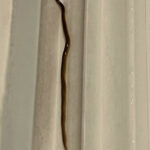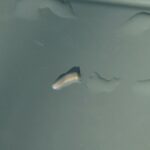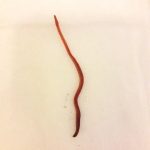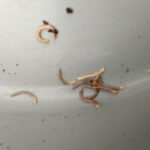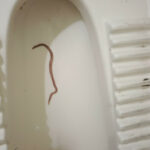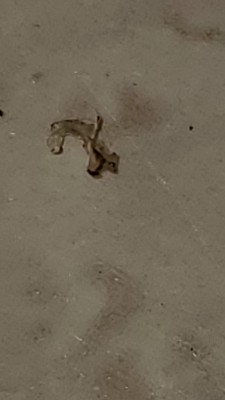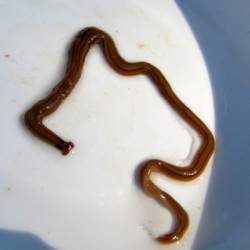
The hammerhead worm is a creature that fascinates many, mainly for its bizarre appearance. However, it seems as though little is known about these worms by the general public, and so this article will investigate just exactly what hammerhead worms are and how we should respond to them.
Hammerhead worms, otherwise known as broadhead planarians, are flatworms of the genus Bipalium. Despite their unnerving appearance, perhaps reminding one of the hammerhead shark, and at times extraordinary length, hammerhead worms are not dangerous. That being said, although hammerhead worms are not directly harmful to humans — not being prone to attacking humans and not carrying or being parasites — they can harm humans indirectly. This is because they are considered an invasive species. Hammerhead worms feed on earthworms, who are one of the key benefactors of our environment. Earthworms decompose organic matter and enrich the soils of our ecosystems with nutrients, and without them, the planet as we know it might not survive. We have covered this topic specifically in an article of ours if our readers wish to check that out.
Furthermore, the way in which hammerhead worms feed on their prey, who consist of earthworms, slugs, the larvae of various insects and other hammerhead worms, provides cause to believe that these critters really are a considerable threat to earthworms. Hammerhead worms have sensors underneath their heads, called chemoreceptors, which identify prey by detecting biological signals given off by other lifeforms, depending on various factors such as varying levels of pH. In simple words, hammerhead worms already have the upper hand on all of their prey as they can detect them from far away. On that note, hammerhead worms also tend to follow trails left behind by earthworms and slugs, which is perhaps an even simpler way of finding their prey. Once they have found their prey, hammerhead worms will wrap their bodies around their prey, pushing it against the ground, and then secreting a sticky substance which further paralyzes the prey. After this, the worm protrudes its pharynx to emit a substance which liquefies the prey’s body, making it easy to slurp up their meal. Yes, you read that right, they liquefy their prey. Out of all the terrestrial invertebrates, the hammerhead worm is the sole creature with this ability.
Given all of this, it is safe to say that if you are an earthworm, slug or larva and a hammerhead worm has their sights set on you, there is little chance for survival. This has worried many, as the potential for the endangerment of earthworms is a major concern and threat to the sustainability of this planet’s many ecosystems that rely on earthworms. So, how should we respond to finding a hammerhead worm? What are we justified in doing if we find a hammerhead worm, given the threat they pose? The truth is, there is not one answer. We would say that killing the worm is out of the question. Despite the threat they pose, hammerhead worms do have purpose and contribute to the environment in some way, just as any organism, and they have intrinsic value. Do we move them somewhere else? Well, that would not stop the hammerhead worm from returning to the location one found it in, and that could also endanger whatever organisms live in the new habitat they are placed in. Unfortunately, there is not much we can do, and perhaps it is not our responsibility to try and meddle with natural phenomena. What we can do is encourage that shipping companies and other sources of importation and exportation integrate stricter precautions to ensure the prevention of more invasive species being introduced to foreign habitats that they might threaten.
To conclude, we wish to stress that despite the threat they pose to other species of worms and worm-like creatures, and despite their arguably desturbing way of trapping their prey and melting them, hammerhead worms should not be demonized. These facts do not make the creatures evil, and they are not justification for treating the worms cruelly and killing them out of fear or disgust. We hope that our readers did glean something interesting or useful from this article, and that they are staying safe and cozy during these strange times!
All About Worms is always free, always reader-supported. Your tips via CashApp, Venmo, or Paypal are appreciated! Receipts will come from ISIPP Publishing.
You might also find these guys interesting!





